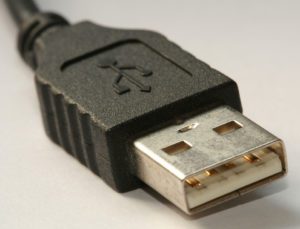Previously, I’ve examined why RS-232 is still king of the out-of-band management console. As Opengear launches its latest USB console server solution, let’s revisit some of the pros and cons of using USB vs. RS-232 to manage your network device consoles.
Plug and work
 RJ45 or DB9? DCE or DTE? Yost or custom? Straight or rollover? – said no USB console user ever. RS-232 wiring, especially over the ubiquitous RJ45/8P8C console connector, comes in a staggering (and often frustrating) variety of pinouts. And if you find yourself without the correct adapter or cable, it’s time to pull out the crimping tool.
RJ45 or DB9? DCE or DTE? Yost or custom? Straight or rollover? – said no USB console user ever. RS-232 wiring, especially over the ubiquitous RJ45/8P8C console connector, comes in a staggering (and often frustrating) variety of pinouts. And if you find yourself without the correct adapter or cable, it’s time to pull out the crimping tool.
USB connectors are limited to just a few standardized Types, Mini B being common for consoles. Opengear’s USB Type A ports make cabling a console just like plugging it into a laptop.
What’s more, USB consoles typically auto-baud, so go ahead and configure that console for 9600, 115200 or 230k – chances are it’ll Just Work.
Driven to tears
As is often the case, the price of hardware simplicity is software complexity. Not all USB consoles are created equal, and communications requires a compatible USB TTY driver on the device you’re connecting from.
While the vast majority of network vendors’ consoles utilize UARTs from a just a few chipset vendors (e.g. FTDI, Silicon Labs), if you’ve ever had to hand-hack a custom .kext to get your Macbook talking to that USB to serial adapter, you’ll know the frustration when drivers Don’t Just Work.
Our USB console server solution handles this complexity automatically, so Opengear users can connect and manage USB consoles from the widest range of vendors completely oblivious to driver requirements – the way it should be.
Run cable run
USB is limited to 5m/16’5″ for self-powered devices, whereas RS-232 stretches as far as 150m/500′ at 9600 baud, making USB is better suited for in-cabinet connections, rather than extended runs around a row, room or building.
The best is the one you have
Your decision about whether to use RS-232 or USB may be dictated by whatever the device has. USB is more common on consumer grade and branch office equipment, while enterprise grade and rack mount infrastructure will be more likely to offer RS-232 – and many devices have both.
And of course your Opengear doesn’t have infinite ports either (we’ll let you know when we’ve invented that!), so you’ve got to consider both port supply and demand.
Now may be a good time to mention: if you have an IM7200 or ACM7000-series unit, upgrading to the new 3.16.5 firmware release unlocks the full suite of new USB console server features – including the ability to use all four of its USB ports for console connections, potentially doubling the port count!




